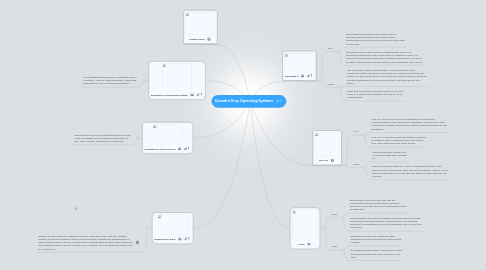
1. Windows 8
1.1. Pros
1.1.1. The biggest advantage of Windows is that it provides ready-made solutions that can be implemented by just about anyone who’s ever used a computer.
1.1.2. Microsoft Office is also 100% compatible with any file or document produced in the office space in America. In fact, MS Office isn't compatible with other software and systems, so much as other software and systems strive to be compatible with Office.
1.2. Cons
1.2.1. The only other major disadvantage of using Windows in the workplace is that over 95% of all viruses and malicious software are written for the Windows OS. This means you have to double-down all security measures if you’re using Microsoft software across the board.
1.2.2. while this worldwide operating system is far from trash, it is often not as stable as its Mac or Linux counterparts.
2. Mac OS
2.1. Pros
2.1.1. Mac OS is the only commercial operating system that is custom-made to work with Apple’s hardware. This gives it a level of efficiency, power, and stability, which is most important for the workplace.
2.1.2. Mac OS X is still the operating system of choice for graphic artists, designers and most others who work with visual and audio media.
2.2. Cons
2.2.1. Apple computers simply cost much more than your average PC.
2.2.2. Apple’s computer platform is often mistakenly thought to be immune from viruses and other malicious software. While it is true that you rarely hear of a Mac that has gotten a virus, they are not immune.
3. Linux
3.1. pros
3.1.1. Distributions such as Linux Mint and the increasingly popular Ubuntu were designed especially to be easy and non-threatening for the average user.
3.1.2. Implementing Linux on an enterprise level can add up to huge savings: the operating system, and almost all of its available software (including the Microsoft-compatible Libre Office) are 100% free.
3.2. Cons
3.2.1. Perhaps more difficult is getting other managers or board members to approve the change.
3.2.2. Its biggest disadvantage is that its end-users and office workers are often scared of it at first.
